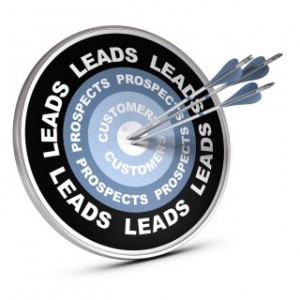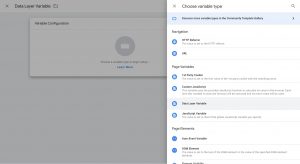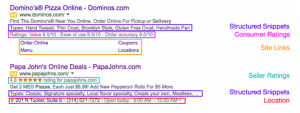Look, be honest with yourself, do your landing page design suck? Are you failing to meet your conversion rate targets? If you are making some of the common mistakes made by other websites, you could have a landing page that is turning away traffic, rather than converting traffic into new users, new registrations, and creating new business.

Building effective landing pages that provide you with a good flow of traffic and higher conversion rates is a prime concern for marketers. According to Marketing Sherpa, “Getting pages built and tested is one of the top five challenges faced by B2B marketers.” However, “Only 52% of companies and agencies that use landing pages also test them to find ways to improve conversions.”
If you are not testing your landing pages, how will you know if you are maximizing their effectiveness?
Elements That Make Your Landing Pages Fail
Creating effective landing pages looks simple enough, but the truth is they are much more complex than most realize. This is why so many of them are riddled with errors and mistakes.
To help you identify and correct some of the mistakes you are making when constructing your pages, we have put together a list of some of the most common elements that can make them less than impressive:
#1 – You Have A Crappy Headline
One of the first things users will see when they land on your page is the headline. Or at least that is what they should see. Your headline needs to be strong and enticing. You only have a few words to communicate your intentions and hook them with curiosity. According to Copyblogger, “On average, 8 out of 10 people will read headline copy, but only 2 out of 10 will read the rest. This is the secret to the power of your title, and why it so highly determines the effectiveness of the entire piece.”
Don’t do this:
The headline on this landing page does very little to convey value or entice users to take the desired action to fill out the form on the right. “Your headline is the first, and perhaps only, impression you make on a prospective reader. Without a compelling promise that turns a browser into a reader, the rest of your words may as well not even exist. So, from a copywriting and content marketing standpoint, writing great headlines is a critical skill,” says Copyblogger.
#2 – Long Winded Messaging
Fifty-five percent of people spend fewer than 15 seconds actively on a page, according to Tony Haile of Chartbeat. This is not a lot of time to convince a user. So, don’t make them think. While it’s tempting to tell users about all the features, benefits, and research you have put into your offering, it’s more important to get to the point. People are going to make a split second decision about whether to take action, click, or fill out their information.
If it is not abundantly clear what you are offering and how it benefits the user, they will leave. Users will not spend time trying to figure out why they should care about your offer—you need to make it clear immediately, or your landing page optimization numbers will suffer.
Take the following landing page, for example. In addition to missing an enticing headline and a clear call to action, there is too much content for users to decipher.
Not having enough information can also be an issue, so it’s important to find the right amount of content to engage users, but not too much to drive them away.
#3- Your Call To Action Doesn’t Excite Anyone
“Click here,” “Learn more,” and “Sign up” just don’t cut it. They are too generic, and users have seen them a million times. Your call to action copy needs to be relevant to the user and communicate value.

The example above has a call to action that is clear and relevant to the user. You know what you’re getting and why, and honestly if your pet is missing, and you have a change to find them, you’re gonna click that button. Well played, PetAmberAlert.com, well played.
#4 – You Drive All Your Traffic To One Landing Page
Do you REALLY want to meet your conversion rate optimization targets? Don’t drive all your traffic to one landing page. Landing page optimization requires specific targets. As a general rule, limit your landing pages to one offer/product/service/call to action per page.
According to Marketing Sherpa, of B2B companies that use landing pages, 62 percent have six or fewer total pages, and 48 percent of them contain multiple offers.
“The best ones focus on a single offer. They’re ultra-specific and ultra-targeted. This will also make your ad CPC lower, CTR higher and your landing page will have a better conversion rate since you’re bringing targeted people to the page,” says Peep Laja.
A landing page that has way too many offers going on in one place:
#5 – Your Ad And Landing Theme Don’t Match
There must be a clear connection between your source ad and your landing page. Wording, imagery, and design elements all need to be consistent, or users will question the validity of your landing page. “Humans track information in a similar fashion to the way animals follow a scent. If the scent is sufficiently strong, the user will continue to go on that trail. But if the scent is weak, they stop and hit the back button—figuring ‘this is not what I wanted,’” says Peep Laja.
“Message match is an essential part of why landing pages can be so successful. Message match is the ability of your landing page to reinforce the messaging presented on the link that was clicked to reach the page. Most visitors are impatient and will leave your page within a few seconds of arrival if you don’t reinforce their intent with a matching headline and purpose (quickly and clearly),” as stated on Landing Page Conversion Course.
In this video, Rand Fishkin, CEO of MOZ.com, explains to concept of matching your marketing message in your ad to the landing page:
#6 – It’s NOT Optimized For Mobile
According to Smart Insights, 80 percent of Internet users access the Internet using their smartphone, and 47 percent access the Internet using a tablet. These numbers are only going to increase, making it vital that you optimize your pages for mobile, or you will miss out on conversion rate optimization opportunities.
The importance of mobile optimization for landing pages has just gotten more important. With Google recently announcing that mobile-friendly pages will now become a rankings factor, failure to have yours optimized for mobile will also have SEO repercussions.
“Starting April 21, we will be expanding our use of mobile-friendliness as a ranking signal,” according to Google. “This change will affect mobile searches in all languages worldwide and will have a significant impact in our search results. Consequently, users will find it easier to get relevant, high quality search results that are optimized for their devices.”
#7 – Your Design Is Painful
First impressions are vital. Your design needs to be on point and visually appealing. “Great landing pages use fonts, colors and visuals that are tailored specifically to the audience and action you desire, thereby enhancing the experience and boosting conversions,” says Brian Clark. You can enhance the effectiveness of your pages even more by including video. According to Eyeview, using videos can increase conversions by 86 percent.
Great example of you’re doing it right:

#8 – Lack Of Social Proof
Testimonials and social proof sell. One of the first things users look for when they arrive on your landing page is social proof, and lack of it could drive them away. It gives your page and your offer legitimacy.
“Your product or service could be the best in the world, and it’s okay to lay that claim — it’s just that people may not believe you unless they hear it from other people, too. And that’s exactly what social proof does,” says Lindsay Kolowich on Hubspot.
She adds, “When someone lands on your landing page, they don’t know whether your offer is any good, which gives you the opportunity to sway them using quotes from customers, embedded tweets, and so on. If they see that people who have consumed the offer are speaking positively about it, they are more likely to think positively about it, too — and are therefore more likely to fill out the form and convert to a lead.”
Kolowich outlines six ways you can add social proof to your pages:
- Customer testimonials
- Case studies
- Number of social shares
- Embedded social media posts
- Number of users or downloads
- Trust seals
Landing Page Optimization Elements
Now that we have shown you what you are doing wrong, we thought that it’s only fair to end on a good note. Unbounce provides an overview of the five essential landing page elements every page must have:
- Your Unique Selling Proposition (USP)
- The hero shot – an image or video showing your product in action
- The benefits of your product, service or offer
- Social proof
- A single conversion goal – your call to action
Here’s the template you can follow to help you avoid many of the common mistakes that make your landing pages suck:
Conclusion
The ultimate goal of a landing page optimization is to convert website traffic and get users to take a specific predefined action. Regardless whether you want users to login into your website, sign up for a new account, or buy a product or service, you need to avoid design elements that make your pages suck. This will drive traffic away rather than to your website. Focus on the elements of great landing pages to improve landing page optimization and achieve your marketing objectives.
(323)
Report Post










